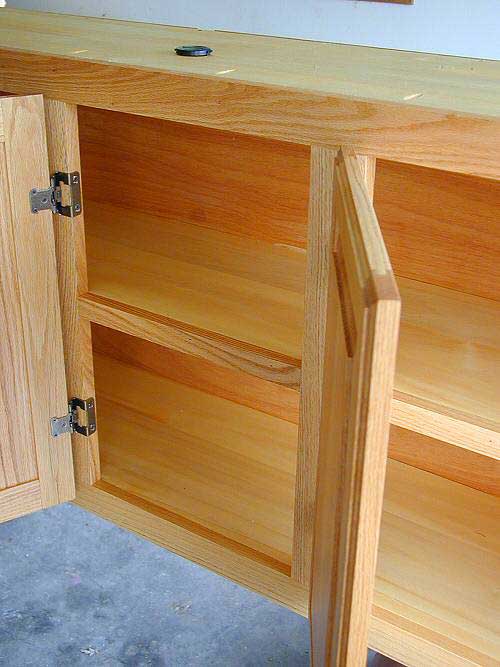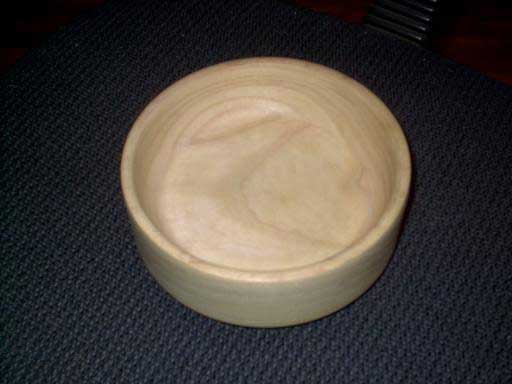Uses for Cottonwood
Cottonwood is a useful and versatile species. Here, pros discuss aspects of working with the wood. August 30, 2005
Question
I have just cut down an eastern cottonwood tree. I have asked around but most everybody thinks itís a junk tree. I would like to know if this tree is worth sawing into boards or should I just roll it into the woods? The usable portion of the tree measures 31" in diameter x 27 feett x 24" in diameter.
Forum Responses
(Sawing and Drying Forum)
From contributor D:
I had a cottonwood tree slightly bigger than that and had it quarter sawn into 1x8" and use the lumber, 1100' to panel the inside of my shop. It's always a conversation topic. I lost maybe 3 boards out of something like 167. The three board were due to the WM bandsaw getting dull.
From Gene Wengert, forum technical advisor:
It is potentially very good. Check the archives here for past discussions about uses of cottonwood. Use the term "cottonwood".
From contributor G:
We used eastern cottonwood as casing and for cabinets in our bathroom. It is a very attractive wood. The figure reminds me of maple with eyes, curly grain, etc. Cottonwood tends to fuzz a little when surfaced so a little more attention needs to be given to finishing. We used Velvit Oil. After the first coat I wet sanded to get a nice smooth surface. Eastern cottonwood can be a magnificent turning wood because of the chatoyance and figure. It can also be difficult to turn because of the silica content and tendency to tear out.
From contributor L:
Some uses are red oak cabinets with cottonwood shelves and also framing lumber, sub floors, crates, boxes, paneling, and even caskets. You hear a lot about warping, but if itís sawn and dried properly itís not a problem. The only problem is sometimes it gets fuzzy when machined. I use quite a bit of it because it is free and not much market value.

Click here for full size image
From contributor B:
Cottonwood is a fuzzy wood, but good to work with. It works well for horse stalls, and even fencing.
From contributor W:
It also works well for lowboy decking. It works well for lowboy decking because it gives instead of breaking under heavy equipment. For the stock trailer I would use something that is rot resistant such as black locust, white oak, osage orange, and etc.
From contributor W:
You'll have to get use to the odor. I find it that it has a pretty strong odor. It works nice but does fuzz up. Itís also good utility wood but decorative.
From Gene Wengert, forum technical advisor:
Cottonwood does indeed have a strong odor. The odor is worse when bacterially infected - being a wet site tree, bacteria are common. Being a light weight wood, fuzzing is common unless the MC is under 6% MC and sharp (HSS) tools are used. It helps to use more slender knife angles than normal Ė the rake is large. As I have said many times, probably half of the wooden caskets made in the USA are from cottonwood. It can be finished to look like cherry, walnut, and etc.
From contributor G:
To contributor D: You will need to sharpen your tools frequently. Also a shear cut is good sometimes to avoid tear-out at the end.
From contributor R:
To contributor B: You were right with sharp tools - it did turn quite nicely. I just spun something out very simple to start to see how it will react in the microwave (that is how I dry). It cut well and would finish bright white if I wanted. I burnished it with a little colored finish to bring out the grain. Sorry about the poor picture, there is a lot more grain detail than the picture shows.

Click here for full size image
From contributor N:
Am I right in assuming that the smell of the wood will not be a problem after some kind of a finish is put on it?
From contributor D:
To contributor N: As I stated in my past post, my shop is paneled in CW and my CW is left unfinished. No one complains about an odor in my shop. After CW is dry the odor is pretty much gone.
The comments below were added after this Forum discussion was archived as a Knowledge Base article (add your comment).
Comment from contributor J:
Cottonwood resists moisture much better then pressboard. Pressboard tends to swell, distort, and decompose very rapidly and has no structural value. CW holds up very well under stress. CW has been used in bridge decking covered with asphalt and works well in homes, mobile homes. moving vans, floors, and walls. With todayís technology in wood preservatives and with proper maintenance I donít see any reason why you couldn't build a deck or a porch out of CW.

